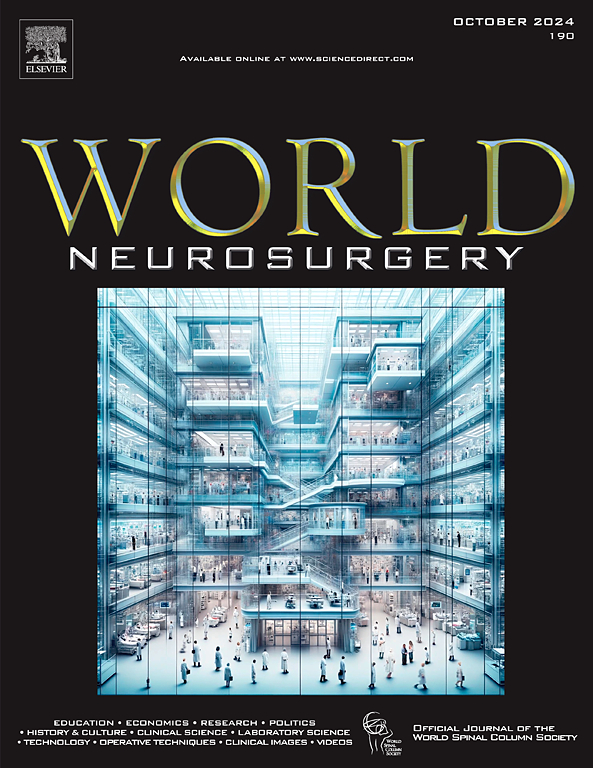Perceived Barriers to a Neurosurgical Career for Medical Students and Unspecialized Residents Worldwide: A Systematic Literature Review
IF 1.9
4区 医学
Q3 CLINICAL NEUROLOGY
引用次数: 0
Abstract
Globally, a large deficit of neurosurgeons exists along with a growing burden of disease requiring neurosurgical care. Also, considerable geographical disparities remain in the neurosurgical workforce distribution. Augmenting and diversifying the neurosurgical workforce requires addressing barriers which deter medical students and unspecialized residents from pursuing a neurosurgical career. Current studies have largely investigated these challenges on a national scale. Investigation into barriers to a neurosurgical career from a global perspective has been limited. Identifying these barriers across high- and low/middle-income countries is critical to recruiting a more robust neurosurgical workforce and reducing global disparities in access to neurosurgical care. We conducted a systematic review to identify perceived barriers encountered by medical students and unspecialized residents to pursuing a neurosurgical career worldwide. We compared studies performed in high- versus low/middle-income countries and identified shared challenges related to gender stereotypes, work-life balance, academic rigor, and financial compensation. Our findings form a basis for formulating global solutions to augment the neurosurgical workforce.
求助全文
约1分钟内获得全文
求助全文
来源期刊

World neurosurgery
CLINICAL NEUROLOGY-SURGERY
CiteScore
3.90
自引率
15.00%
发文量
1765
审稿时长
47 days
期刊介绍:
World Neurosurgery has an open access mirror journal World Neurosurgery: X, sharing the same aims and scope, editorial team, submission system and rigorous peer review.
The journal''s mission is to:
-To provide a first-class international forum and a 2-way conduit for dialogue that is relevant to neurosurgeons and providers who care for neurosurgery patients. The categories of the exchanged information include clinical and basic science, as well as global information that provide social, political, educational, economic, cultural or societal insights and knowledge that are of significance and relevance to worldwide neurosurgery patient care.
-To act as a primary intellectual catalyst for the stimulation of creativity, the creation of new knowledge, and the enhancement of quality neurosurgical care worldwide.
-To provide a forum for communication that enriches the lives of all neurosurgeons and their colleagues; and, in so doing, enriches the lives of their patients.
Topics to be addressed in World Neurosurgery include: EDUCATION, ECONOMICS, RESEARCH, POLITICS, HISTORY, CULTURE, CLINICAL SCIENCE, LABORATORY SCIENCE, TECHNOLOGY, OPERATIVE TECHNIQUES, CLINICAL IMAGES, VIDEOS
 求助内容:
求助内容: 应助结果提醒方式:
应助结果提醒方式:


